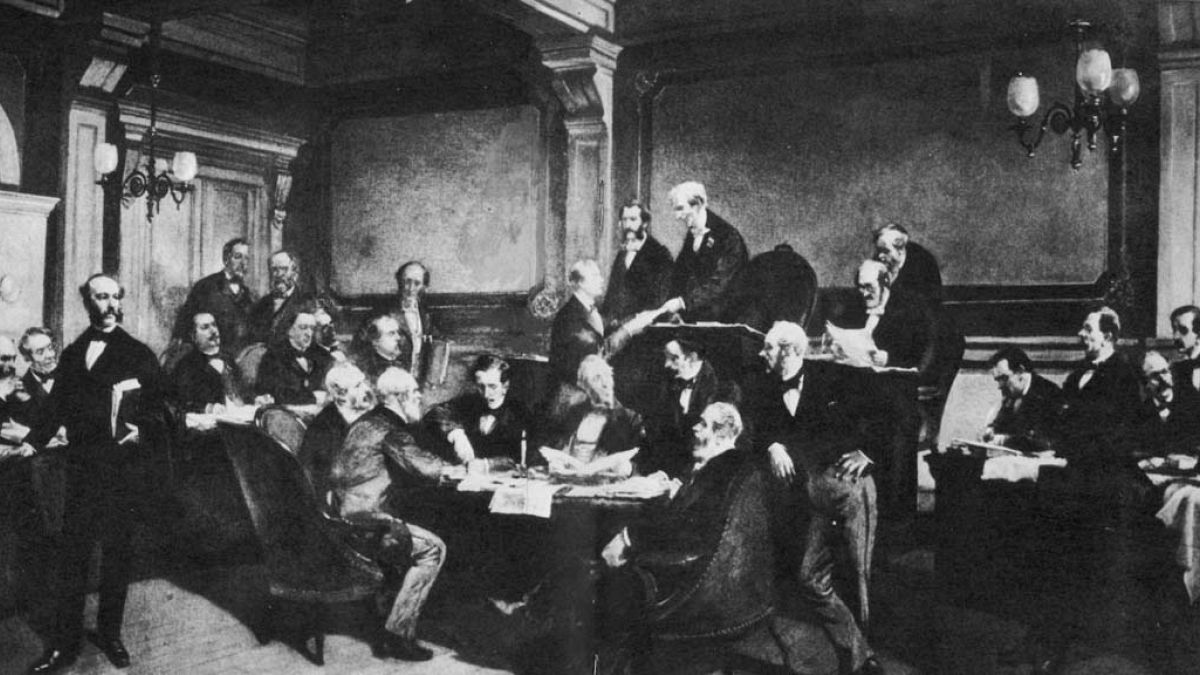Today marks the 70th anniversary of the agreement of the fourth and final Geneva Convention following an 85-year process of defining the rules of war
Today marks the 70th anniversary of the Geneva Conventions. The treaty, which is made up of four conventions, established the modern, international legal standards for humanitarian treatment in times of war.
The conventions were agreed on 12th August 1949 and eventually were ratified, with some exceptions, by 196 countries around the world
What are the Geneva Conventions?
The conventions sets out the rules by which countries and their armies’ should treat both armed services personnel and civilians caught up in war.
The convention agreed 70 years ago at the diplomatic conference of the International Committee of the Red Cross was actually the fourth convention agreed upon.
The treaties govern how civilians, prisoners of war, victims of shipwrecks, the sick and wounded are treated in combat.
Read more: Have the Geneva Conventions made a difference?
The conventions were added to and revised over the years with the final one - which covered the treatment of civilians in war - being formally adopted 70 years ago. The three modern protocols were adopted in 1977 and 2005.
It sets out basic rules such as participants in the war should actively avoid targeting places where civilians are likely to be such as schools and hospitals and that all injured soldiers and prisoners of war should be given fair treatment.
How did an international treaty protecting human rights get started?
The idea for an international treaty governing warfare was first proposed by Swiss humanitarian Henry Durant after he witnessed the suffering of wounded soldiers at the Battle of Solferino in 1859 in northern Italy during the Franco-Austrian War.
At the time America was engulfed in its civil war which would eventually kill between 600,000 and a million people in just four years.
Meanwhile in Europe, the Napoleonic wars were still in living memory and there was a rise in armed conflict due to the Crimean war between 1954-56, the clashes between the second French Empire under Napoleon's nephew and the increasingly agitation for unification in Germany and Italy.
In 1863, Durant and four others initially setting up a commission to explore the possibility of an international, private organisation which would provide humanitarian aid to wounded soldiers which would eventually become the International Committee of the Red Cross.
In turn, the Swiss government invited the governments of all European countries as well as the United States, Brazil and Mexico to attend an official diplomatic conference in Geneva where the representatives of 12 states and kingdoms signed the first Geneva Convention in August 1864. Norway and Sweden - which were then part of one country - later signed in December and many other countries followed suit over the coming decades.
How have the Conventions changed over the years?
The original convention had just 10 articles but these were revised and expanded with more articles being added over the next 85 years.
The first convention only applied to wounded soldiers but a second convention was adopted for prisoners of war in 1929 after the horrors of the First World War. The final two, which concerned people shipwrecked during war and civilians bystanders, were adopted in 1949 after the Second World War.
In 1977, two additional protocols were introduced to regulate for the protection of victims of International and non-International Armed Conflicts. This meant the Convention could cover civilians in civil wars.
How is the Geneva Convention observed today?
The nature of armed conflict has changed immeasurably since 1949. Today the majority of worldwide conflict is civil wars such as in Syria or wars between two powers fought out in one country by proxy such as the conflict between Iran and Saudi Arabia being played out in Yemen.
Syrian President Bashar al-Assad is suspected of carrying out multiple chemical weapons attacks against his own citizens. Although the prohibition of chemical weapons was the result of a separate treaty set up in The Hague, the use of the weapons is a clear violation of the rules against mistreatment of civilians.
Myanmar has been accused of perpetrating a genocide against the Rohingya Muslims in Rakhine state while its civilian leader - and Nobel Peace Prize Laureate - Aung San Suu Kyi has been criticised for doing little to stop it.
Similarly, as modern warfare increasingly moves towards the use of drones and other robots in place of actual soldiers on the ground it is unclear if humanitarian principles and the commitment to peace will continue to hold sway over the course of the next 70 years.
